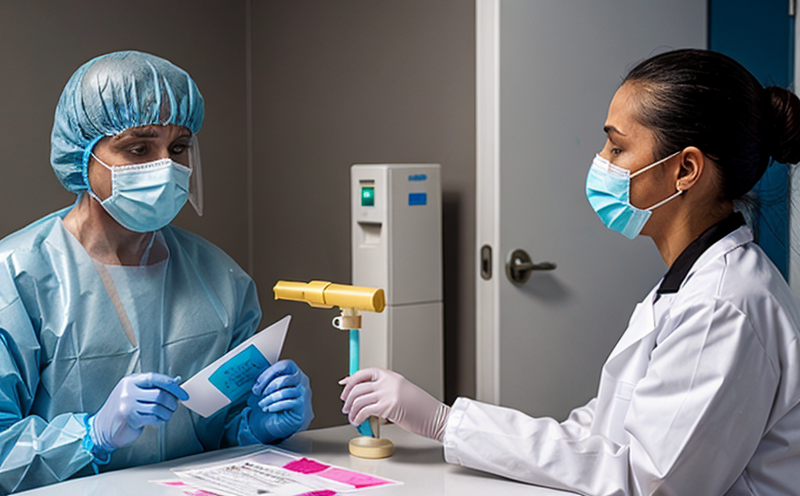Anaplasma spp. Detection Testing in Cattle
Effective monitoring and management of Anaplasma spp. infections in cattle are critical for maintaining animal health, optimizing productivity, and ensuring the sustainability of dairy and beef industries. Anaplasma spp., a group of gram-negative bacteria belonging to the family Anaplasmataceae, can cause significant economic losses through reduced milk production, increased culling rates, and higher mortality rates among calves.
Anaplasmosis is primarily transmitted via tick vectors such as the cattle tick (Rhipicephalus microplus) and less commonly by contaminated needles or equipment. The disease poses a particular threat in tropical and subtropical regions where ticks are abundant. Early detection of Anaplasma spp., particularly in their early stages, is essential for implementing effective control measures.
The most common Anaplasma spp. affecting cattle include Anaplasma marginale, which causes severe anemia and threatens the viability of infected herds, and Anaplasma phagocytophilum, which can infect leukocytes and cause reproductive issues in cattle.
Our Anaplasma spp. detection testing service employs cutting-edge molecular techniques such as quantitative real-time PCR (qPCR) to identify the presence of these pathogens with high sensitivity and specificity. This method allows for precise quantification of pathogen loads, which is crucial for understanding infection dynamics and guiding treatment strategies.
The testing process begins with proper specimen collection, typically involving blood samples from cattle suspected of being infected. Specimen handling must be conducted under sterile conditions to avoid contamination, ensuring accurate results. Once collected, the samples are transported to our laboratory where they undergo rigorous processing steps, including DNA extraction and amplification using qPCR assays.
Our laboratory utilizes internationally recognized standards such as ISO 15189 for quality management systems in medical laboratories to ensure consistent and reliable results. This commitment to excellence is reflected in our proficiency testing participation programs that align with OIE (World Organization for Animal Health) guidelines, ensuring that our results are globally accepted.
For dairy herds, early detection of Anaplasma spp. can prevent significant economic losses by enabling timely intervention through antimicrobial therapy and tick control measures. In beef cattle, it helps in identifying animals at higher risk of mortality or suboptimal performance, allowing for strategic culling decisions.
The environmental impact of Anaplasmosis extends beyond animal health to include the broader ecosystem. Infected ticks can serve as vectors not only for Anaplasma spp. but also other pathogens harmful to both livestock and wildlife. By controlling these tick populations through effective management practices, our testing service contributes indirectly to biodiversity conservation.
Environmental and Sustainability Contributions
- Pest Management: Effective control of ticks reduces the spread of zoonotic diseases between livestock and wildlife, promoting healthier ecosystems.
- Economic Efficiency: By minimizing the prevalence of Anaplasma spp. infections, our service supports sustainable agricultural practices that enhance animal welfare and productivity.
- Biodiversity Conservation: The reduction in tick populations contributes to the preservation of diverse ecosystems where these insects play a critical role.
Why It Matters
The detection and control of Anaplasma spp. infections are vital for maintaining robust livestock health programs, particularly in regions with high tick prevalence. The economic implications extend beyond individual farms to entire supply chains, including meat processors and retailers who rely on healthy animal products.
Failure to detect and manage these infections can lead to severe financial losses due to increased veterinary bills, higher culling rates, and reduced productivity. For dairy operations, the impact is particularly pronounced as Anaplasmosis can result in decreased milk yields, impacting profitability.
The global spread of tick-borne diseases like Anaplasmosis also poses challenges for international trade, with stringent import/export regulations often necessitating proof of disease-free status. Our testing service helps meet these regulatory requirements, ensuring that livestock and products comply with international standards such as OIE guidelines.
By providing accurate and reliable detection services, we empower stakeholders to make informed decisions regarding herd management, treatment protocols, and biosecurity measures. This proactive approach not only protects animal health but also supports the broader goals of sustainable agriculture and food security.
Quality and Reliability Assurance
At our laboratory, we adhere to strict quality assurance protocols to ensure that every test result is accurate and reliable. Our commitment to excellence is reflected in our ISO 15189 accreditation, which sets international standards for medical laboratories. This certification ensures that our procedures meet the highest levels of quality and reliability.
We participate regularly in proficiency testing programs aligned with OIE guidelines, further validating the accuracy of our results. These tests are crucial for maintaining credibility within the industry and ensuring that our clients receive consistent, high-quality service.
Our team of qualified professionals uses state-of-the-art equipment and methodologies to perform these tests. The qPCR technology we employ is not only highly sensitive but also reproducible across multiple samples, providing a robust foundation for accurate diagnosis.
In addition to technical expertise, our staff undergo continuous training to stay updated on the latest developments in veterinary diagnostics. This commitment to ongoing education ensures that we can adapt to new challenges and improve our testing capabilities over time.





